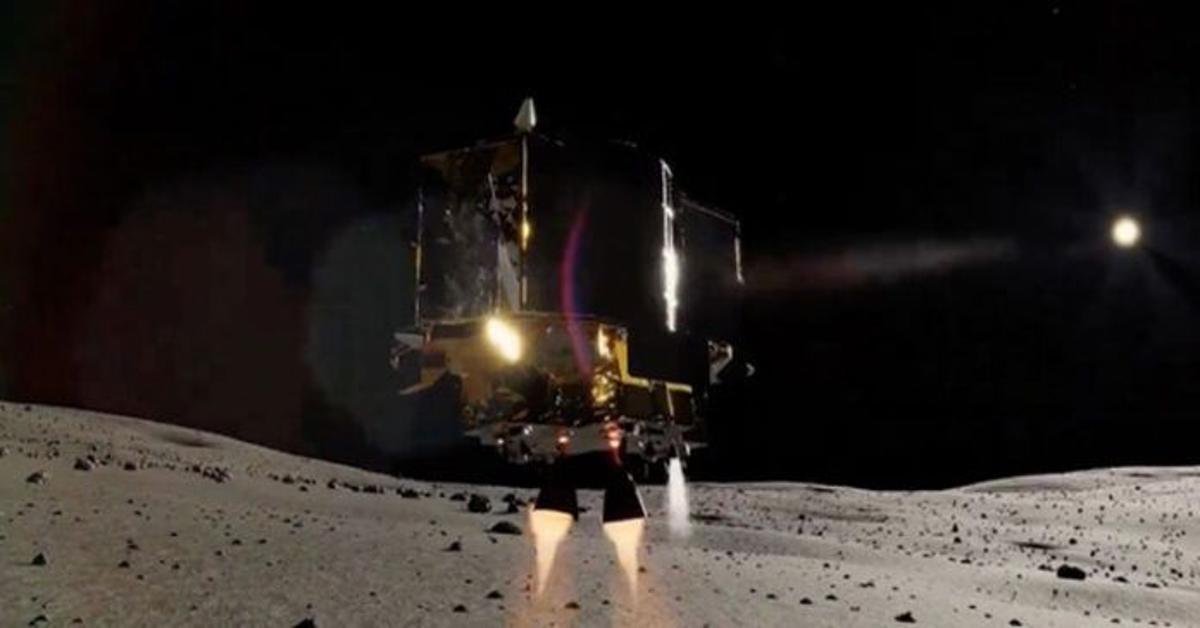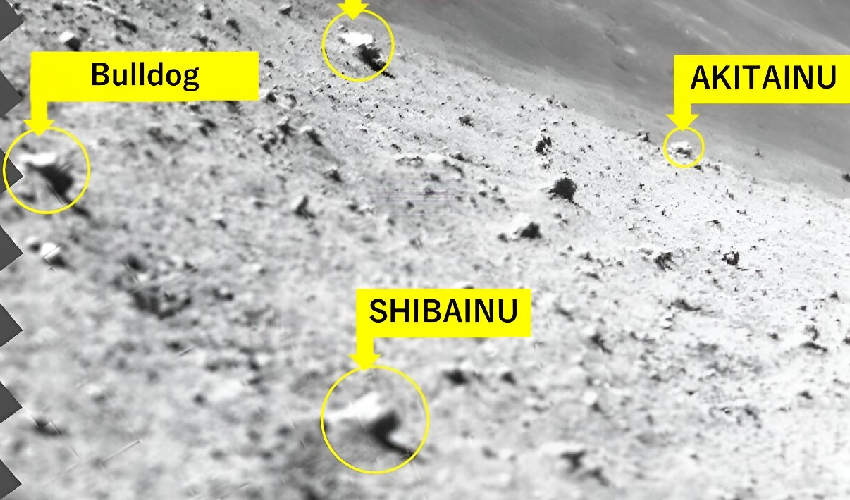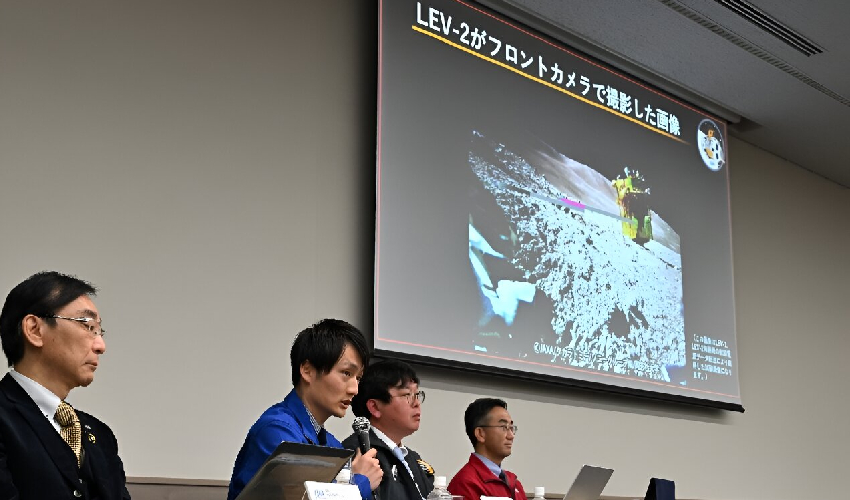Japan’s craft makes precision landing on moon

Japan’s “Moon Sniper” spacecraft successfully landed on the moon with precision despite facing unexpected engine problems at the last moment
Japan’s “Moon Sniper” spacecraft executed a precise lunar touchdown despite encountering last-minute engine issues, the space agency announced Thursday as it unveiled the initial images from the mission.
A photograph captured by a small rover revealed the intact, boxy yellow lander resting at a slight angle on the rocky gray lunar surface, with slopes of the moon rising in the background.
By achieving Saturday’s landing, Japan joined the exclusive group of nations – comprising the U.S., the Soviet Union, China, and India – that have accomplished a soft lunar touchdown. The unmanned Smart Lander for Investigating Moon (SLIM), nicknamed the “Moon Sniper” due to its advanced precision technology, aimed to land within 100 meters (330 feet) of a specific crater, a significantly more precise feat than the typical landing zone range, which experts typically estimate to span several kilometers.
“SLIM achieved an accurate soft landing… the landing point has been confirmed to be 55 meters away from the target point,” stated the Japan Aerospace Exploration Agency (JAXA) on Thursday.

The lander encountered engine troubles during its descent, potentially causing it to deviate from its intended course, as explained by Shinichiro Sakai, SLIM’s project manager, during a press briefing. Prior to the issues, the spacecraft had been on course to land even closer to its target. Additionally, complications with the lightweight craft’s solar batteries resulted in a lack of power generation.
Approximately three hours after landing, JAXA made the decision to power down SLIM, with 12% of its power remaining, in anticipation of a potential resumption of operations when the sun’s angle changes, which could occur within a week due to the craft’s west-facing solar cells.
“Based on current estimates, we are preparing for the resumption of the probe’s operations by February 1,” stated JAXA.
Mission control successfully retrieved technical and image data from the craft’s descent and the lunar surface before shutting down SLIM. The mission aimed to reach a crater where the moon’s mantle, the typically deep inner layer beneath its crust, is thought to be exposed. By studying the rocks in this area, JAXA aims to gain insights into the potential water resources on the moon, crucial for future endeavors such as establishing bases as potential stopovers on the path to Mars.

Following the landing, two probes detached from SLIM: one equipped with a transmitter and another designed to roam the lunar surface, transmitting images back to Earth. The shape-shifting mini-rover, slightly larger than a tennis ball, was co-developed by the company responsible for the Transformer toys.
SLIM is among the recent lunar missions conducted by both governments and private entities, marking 50 years since the first human moon landing. However, technical challenges abound, as evidenced by the U.S. encountering two setbacks in its ambitious lunar programs this month. Additionally, two previous Japanese lunar missions – one governmental and one private – ended in failure. In 2022, the country unsuccessfully launched a lunar probe named Omotenashi as part of the U.S.’ Artemis 1 mission. In April, Japanese startup ispace attempted, unsuccessfully, to become the first private company to land on the moon, losing communication with its craft after what it described as a “hard landing.”
Source: AFP, Newsroom



